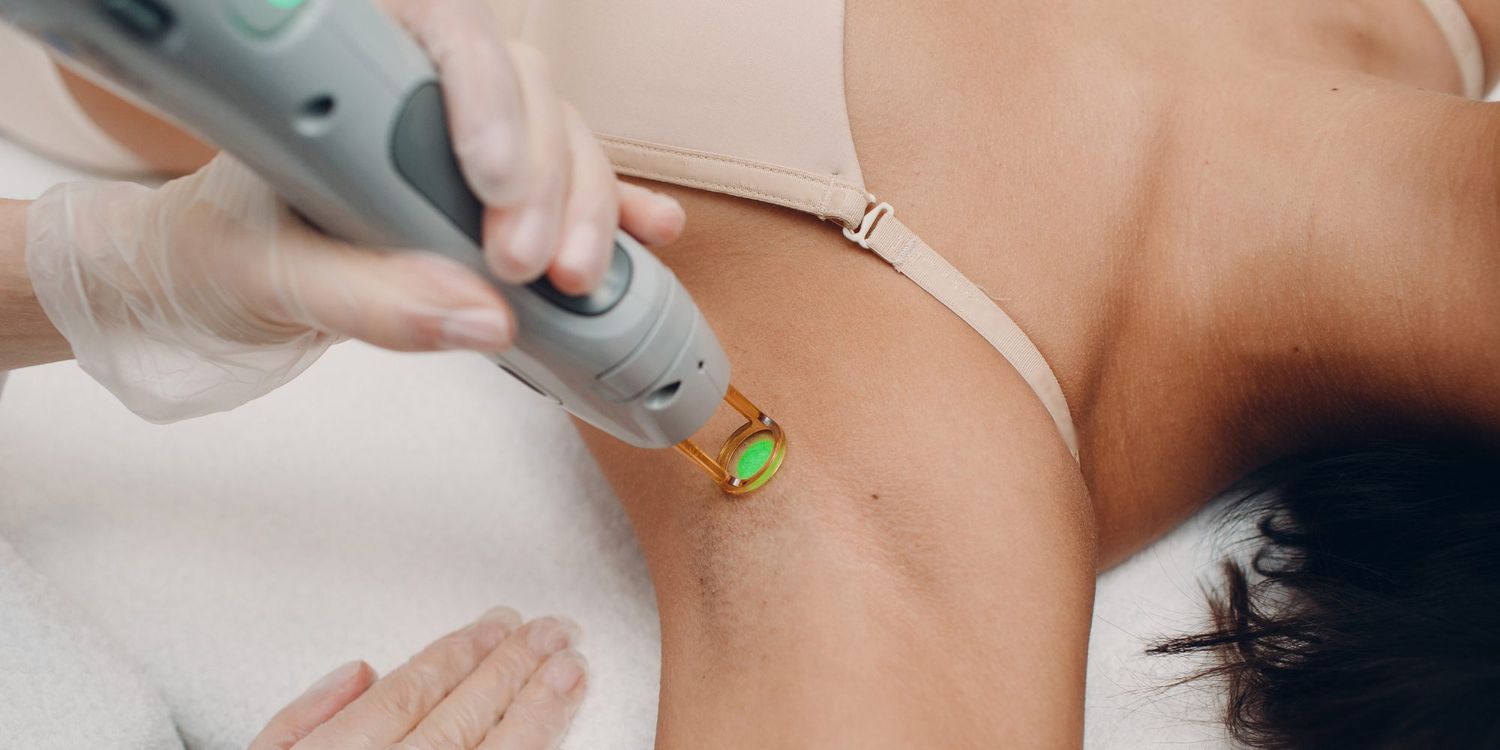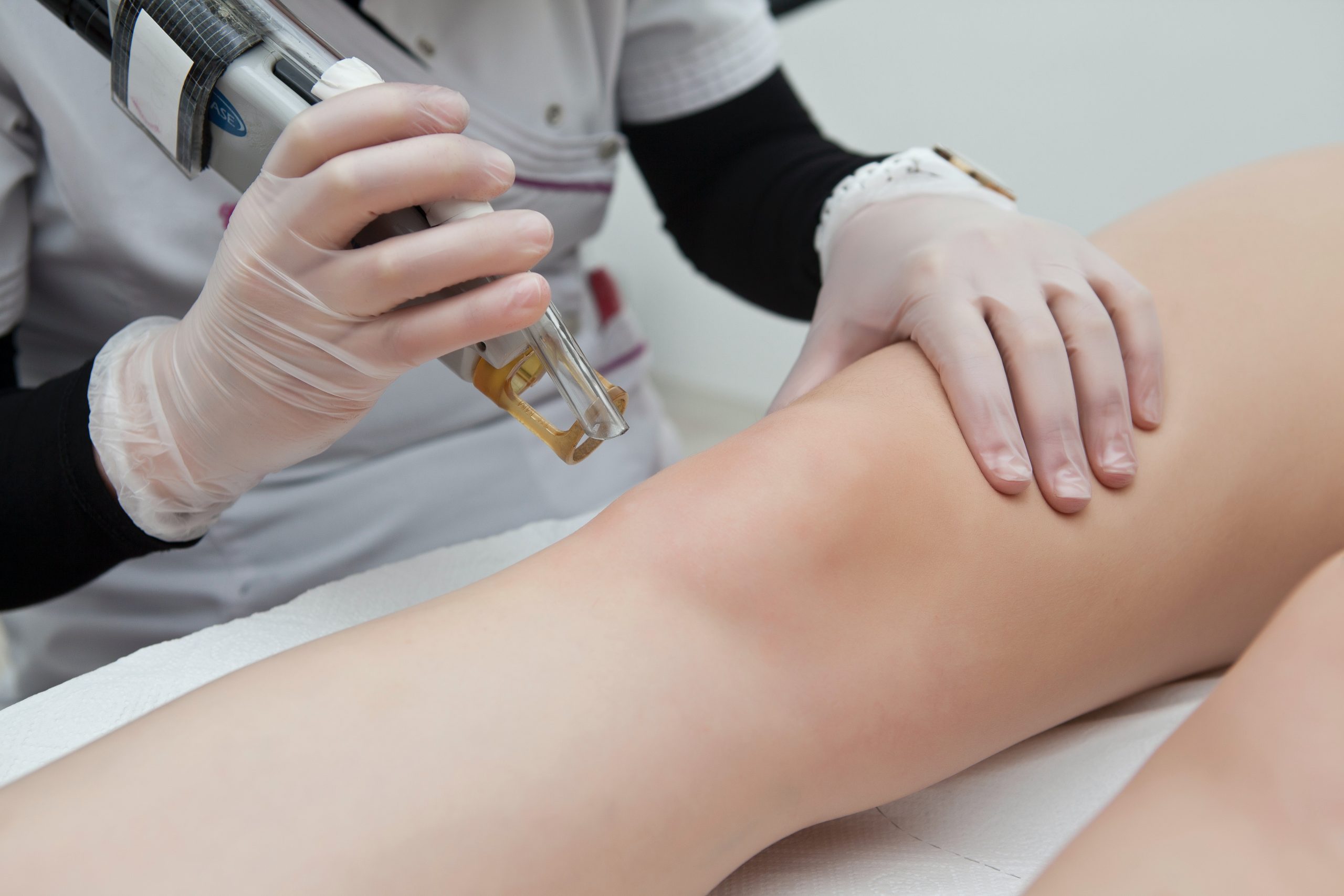Home>FAQs>What Happens If I Stop Laser Hair Removal After 4 Sessions


FAQs
What Happens If I Stop Laser Hair Removal After 4 Sessions
Modified: August 25, 2023
Unsure about the results? Find out the potential consequences of ending laser hair removal treatments after only 4 sessions. Get answers to your general questions today!
(Many of the links in this article redirect to a specific reviewed product. Your purchase of these products through affiliate links helps to generate commission for Under-tec.com, at no extra cost. Learn more)
Table of Contents
- Introduction
- Understanding Laser Hair Removal
- The Importance of Multiple Sessions
- Session 1: Initial Hair Removal and Hair Growth Phase
- Session 2: Targeting Hair in Different Growth Stages
- Session 3: Further Hair Reduction and Damage to Hair Follicles
- Session 4: Achieving Significant Hair Reduction
- Potential Consequences of Stopping at 4 Sessions
- Hair Regrowth and Potential Need for Additional Sessions
- Long-Term Results and Maintenance
- Conclusion
Introduction
Are you currently undergoing laser hair removal and contemplating stopping after only four sessions? It’s natural to have questions about the consequences of discontinuing the treatment at this stage. Laser hair removal is a popular method for long-term hair reduction, but achieving optimal results often requires multiple sessions.
In this article, we will explore what happens if you stop laser hair removal after four sessions. We’ll discuss the importance of multiple sessions, the progress made during the initial sessions, and the potential consequences of prematurely ending your treatment. Understanding these factors will help you make an informed decision and manage your expectations for long-lasting results.
Laser hair removal works by targeting the pigment in the hair follicles and heating them with laser energy. This damages the follicles and inhibits hair regrowth. However, because hair grows in cycles and not all hairs are in the same stage at the same time, multiple sessions are needed to effectively target hairs in different growth phases.
Now, let’s delve deeper into the world of laser hair removal and explore the implications of stopping the treatment after just four sessions.
Understanding Laser Hair Removal
Laser hair removal is a popular and effective method for achieving long-term hair reduction. The treatment works by targeting the pigment in the hair follicles, delivering intense laser energy that selectively damages the follicles without harming the surrounding skin.
During a laser hair removal session, a trained technician or dermatologist will use a handheld device to emit pulses of laser light onto the targeted area. The light is absorbed by the melanin (pigment) in the hair follicles, which then converts the light energy into heat. This heat damages the follicles, inhibiting their ability to produce new hairs.
It’s important to note that laser hair removal is most effective on dark, coarse hairs. This is because the laser’s energy is absorbed more efficiently by the darker pigment, allowing for better targeting of the follicles. Lighter or finer hairs may require additional sessions for optimal results.
When undergoing laser hair removal, it’s essential to select a reputable and experienced professional to ensure the treatment is performed safely and effectively. They will assess your skin and hair type and customize the settings of the laser device accordingly. It’s also important to follow any pre and post-treatment instructions given by the provider to maximize the effectiveness and minimize any potential side effects.
While laser hair removal offers long-lasting results, it’s important to keep in mind that it is not a one-time, permanent solution. Hair grows in different cycles, including active growth, rest, and shedding phases. Not all hair follicles are actively producing hair at the same time, which is why multiple treatment sessions are necessary.
The number of sessions required varies depending on factors such as hair thickness, the targeted area, and individual response to treatment. On average, most people require anywhere from six to eight sessions to achieve the desired reduction in hair growth.
Now that you have a better understanding of how laser hair removal works, let’s explore why multiple sessions are crucial for optimal results.
The Importance of Multiple Sessions
When it comes to laser hair removal, multiple sessions are essential for achieving optimal and long-lasting results. While you may notice some hair reduction after just one session, it is important to complete the recommended number of sessions to target hair in different growth stages and ensure maximum effectiveness of the treatment.
During each laser hair removal session, the laser energy only affects the hair follicles that are in the active growth phase, known as the anagen phase. Unfortunately, not all hair follicles are in this phase at the same time. This means that some follicles are dormant and not actively producing hair during a particular session.
By undergoing multiple sessions, you increase the chances of treating a larger number of hair follicles in the growth phase. With each subsequent session, more dormant follicles may transition into the active phase, allowing them to be effectively targeted and damaged by the laser energy.
Additionally, hair grows at different rates and cycles, with individual hairs going through different growth stages at different times. Some hairs may be in the anagen phase during the first session, while others may be in the telogen or resting phase. By continuing with additional sessions, you are able to catch those dormant hairs as they transition into the growth phase.
Completing the recommended number of sessions ensures that you target a larger percentage of hair follicles in different growth stages, leading to more comprehensive hair reduction. If you stop laser hair removal after only a few sessions, you may not have fully addressed all the hair follicles, leading to suboptimal results and eventual regrowth.
Furthermore, each laser hair removal session contributes to cumulative damage to the hair follicles. The heat generated by the laser energy damages the follicles, inhibiting their ability to produce new hairs. By undergoing multiple sessions, you are effectively increasing the damage to the hair follicles and reducing their overall viability, enhancing the long-term results of the treatment.
Now that we’ve discussed the importance of multiple sessions, let’s explore what typically occurs during the initial sessions of laser hair removal.
Session 1: Initial Hair Removal and Hair Growth Phase
During the first session of laser hair removal, the primary goal is to target and remove the visible hair in the treated area. This serves as the foundation for subsequent sessions, building upon the initial hair removal and working towards long-term hair reduction.
At this stage, the laser technician will assess your skin and hair type to determine the appropriate laser settings. The laser device will then be applied to the targeted area, emitting pulses of laser energy that are absorbed by the hair follicles.
Keep in mind that not all hair follicles are actively producing hair at the same time. In fact, only a small percentage of hair follicles are typically in the anagen phase or the active growth phase during any given moment.
During the anagen phase, the hair follicle is connected to the blood supply and actively producing new hair. Laser hair removal is most effective during this phase because the pigmented cells in the follicle absorb the laser energy, resulting in targeted damage to the follicles and effective hair reduction.
While the laser energy destroys the actively growing hairs, it does not affect the dormant or resting follicles that are not producing hair. This is why multiple sessions are necessary to target different hair follicles as they transition through the growth cycle.
After the first session, you may experience some immediate hair reduction, but it is important to remember that the ultimate goal is long-lasting results. Some hairs may take longer to shed post-treatment, while others may appear finer or grow at a slower rate.
It’s important to note that the treated area may experience some temporary redness, swelling, or slight discomfort post-session. These side effects are typically mild and subside within a few hours to a couple of days.
By completing the first session, you have taken the initial step towards achieving your desired hair reduction. However, to maximize the effectiveness of laser hair removal and target all hair follicles in different growth stages, additional sessions are necessary.
Now that we have covered the first session, let’s move on to session two and explore its significance in the laser hair removal process.
Session 2: Targeting Hair in Different Growth Stages
In the second session of laser hair removal, the focus shifts towards targeting hair follicles that may have been dormant or in a different growth stage during the initial session. By targeting hair in various growth stages, you can achieve more comprehensive hair reduction and improve the overall effectiveness of the treatment.
During this session, the laser technician will assess the progress of the previous session and make any necessary adjustments to the laser settings based on your skin and hair type. The laser device will then be applied to the targeted area, emitting pulses of laser energy to the hair follicles.
Since each hair follicle goes through different growth stages, including the anagen (active growth), catagen (transition), and telogen (resting) phases, not all follicles are actively producing hair at the same time. This is why multiple sessions are crucial in laser hair removal.
By the time of the second session, some dormant hair follicles may have entered the anagen phase, allowing them to be effectively targeted and damaged by the laser energy. During this phase, the hair follicle is connected to the blood supply and actively producing new hair.
While the laser energy damages the actively growing hair follicles, it may not have the same impact on dormant or resting follicles. For this reason, undergoing additional sessions is necessary to catch more hair follicles in different growth stages and significantly reduce hair regrowth.
After the second session, you may start to notice further hair reduction and an overall improvement in the texture and thickness of the treated area. However, it’s important to remember that the full results of laser hair removal may not be immediately apparent. Hair reduction continues to improve with each subsequent session.
Similar to the first session, you may experience temporary side effects such as redness, swelling, or minor discomfort. These side effects are normal and typically subside within a short period of time.
By completing the second session, you are continuing to build upon the progress made in the initial session, targeting more hair follicles in different growth stages. This contributes to a more comprehensive and effective hair reduction outcome.
Now that we’ve covered the significance of the second session, let’s move on to session three and explore its role in the laser hair removal process.
Session 3: Further Hair Reduction and Damage to Hair Follicles
In the third session of laser hair removal, the focus is on achieving further hair reduction and increasing the damage to the hair follicles. By this point in the treatment process, a significant number of dormant or new hair follicles may have entered the active growth phase, making it an important session for long-lasting results.
During this session, the laser technician will assess your progress, evaluate the response of your hair follicles to previous sessions, and make any necessary adjustments to the laser settings. The laser device will then be applied to the targeted area, emitting pulses of laser energy that target the hair follicles.
By the third session, you may notice a noticeable reduction in hair growth and thickness. This is because the cumulative effects of the previous sessions have contributed to damaging a significant number of hair follicles.
It’s important to remember that not all hair follicles are affected by the laser energy at the same time. Hair follicles exist in different growth stages, with some actively growing and others in resting or transitional phases.
During the third session, the laser energy is able to target a new set of hair follicles that may have been dormant or in a different growth stage during the previous sessions. The heat generated by the laser damages the follicles, inhibiting their ability to produce new hairs.
By continuing with the sessions, you are effectively increasing the damage to the hair follicles and reducing their overall viability, leading to more significant and long-lasting hair reduction.
After the third session, you can expect further reduction in hair growth, with hairs appearing finer and sparser. The treated area will continue to show improvement in texture and overall appearance.
As with the previous sessions, temporary side effects such as redness, swelling, or slight discomfort may occur. These side effects are normal and typically subside within a short period of time after the session.
Completing the third session puts you on a path towards achieving your desired hair reduction goals. However, it’s important to understand the potential consequences of stopping the treatment at this stage, as we will explore in the next section.
Now that we’ve covered the significance of the third session, let’s move on to the potential consequences of stopping at four sessions.
Session 4: Achieving Significant Hair Reduction
In the fourth session of laser hair removal, you’re on the brink of achieving significant hair reduction. By this point, a substantial number of hair follicles have been targeted and damaged, leading to noticeable changes in hair growth and texture.
During this session, the laser technician will assess your progress and make any necessary adjustments to the laser settings. The laser device will be applied to the targeted area, delivering pulses of laser energy to further target the remaining hair follicles.
By the fourth session, you may experience a significant reduction in hair growth compared to when you first started laser hair removal. The treated area will appear smoother, with hairs becoming finer and less noticeable.
The cumulative effects of the previous sessions have contributed to damaging a large number of hair follicles. The heat from the laser energy has relentlessly targeted the actively growing hair follicles, preventing them from producing new hairs.
At this stage, it’s important to recognize that you’re nearing the end of the initial phase of hair reduction. However, don’t let the striking results deceive you—stopping at this point could have consequences on the long-term effectiveness of your desired hair reduction.
Although you may be pleased with the progress made after just four sessions, it’s crucial to understand that hair regrowth is a possibility if the treatment is not continued. Some hair follicles may still be in transitional or resting phases, and without further sessions, they may resume producing new hairs.
By completing the recommended number of sessions, typically ranging from six to eight, you maximize the potential for long-lasting results. Continuing with the treatment ensures that you target all the remaining hair follicles and continue to damage them, preventing or significantly reducing hair regrowth.
Even if you’ve achieved substantial hair reduction after four sessions, it’s essential to maintain realistic expectations. Laser hair removal is not a guarantee of permanent hair removal, and occasional touch-up sessions may be necessary in the future to maintain the results.
Now that we’ve discussed the significance of the fourth session and the potential consequences of stopping at this stage, let’s delve deeper into the hair regrowth and the potential need for additional sessions.
Potential Consequences of Stopping at 4 Sessions
While achieving significant hair reduction after just four sessions of laser hair removal may be tempting, there are potential consequences to consider if you decide to discontinue the treatment at this stage.
If you stop laser hair removal after only four sessions, there is a higher likelihood of hair regrowth compared to completing the recommended number of sessions. This is because not all hair follicles have been targeted and damaged during the limited treatment duration.
By undergoing the full course of treatments, typically ranging from six to eight sessions, you increase the chances of targeting all the hair follicles, including those that may have been dormant or in different growth stages during the initial treatments. This leads to more comprehensive hair reduction and longer-lasting results.
Additionally, stopping at four sessions may disrupt the hair growth cycle that has been altered by the laser treatment. By continuing with the recommended number of sessions, you allow the treatment to consistently target and disrupt the natural hair growth cycle, resulting in more effective and longer-lasting hair reduction.
Another potential consequence of stopping prematurely is the potential for uneven results. With only four sessions completed, there may be areas where hair regrowth occurs at a faster rate than others, resulting in an inconsistent appearance on the treated area.
Moreover, discontinued laser hair removal may require you to start the treatment process from scratch if you decide to resume in the future. This means that any progress made during the initial sessions may be lost, and additional sessions will be needed to achieve the desired hair reduction.
To avoid these potential consequences, it is recommended to complete the full course of laser hair removal sessions as advised by your laser technician or dermatologist. This will increase the likelihood of achieving long-lasting results and minimize the need for future touch-up sessions.
Now that we understand the potential consequences of stopping laser hair removal after four sessions, let’s explore the topic of hair regrowth and the potential need for additional sessions.
Hair Regrowth and Potential Need for Additional Sessions
After completing a series of laser hair removal sessions, it’s important to understand that some hair regrowth may occur over time. Hair regrowth can happen due to various factors, including hormonal changes, genetics, and individual response to treatment.
While laser hair removal significantly reduces the number of actively growing hairs and damages the hair follicles, it does not guarantee permanent hair removal. Some hair follicles may enter a dormant phase during the treatment process and resume hair production in the future.
If you notice hair regrowth after completing your recommended number of laser hair removal sessions, additional sessions may be necessary to maintain the desired hair reduction. These touch-up sessions can help target any new hair follicles that have entered the growth phase and prevent substantial regrowth.
The need for additional sessions varies from person to person and depends on factors such as hair thickness, hormonal changes, and individual response to treatment. Your laser technician or dermatologist can assess your situation and recommend the appropriate number of touch-up sessions to maintain long-term results.
It’s important to note that touch-up sessions are typically scheduled further apart compared to the initial course of treatments. This is because the majority of hair follicles have already been targeted and damaged through the previous sessions.
By staying proactive and regularly attending touch-up sessions as recommended, you can effectively manage hair regrowth and maintain the desired hair reduction achieved through laser hair removal. These sessions ensure ongoing hair follicle damage and help prolong the results of the initial treatments.
Furthermore, maintaining a consistent at-home skincare routine may also help in managing hair regrowth. This may include methods such as shaving, waxing, or using depilatory creams, depending on individual preference and hair growth patterns.
It’s worth noting that laser hair removal does not prevent the growth of new hairs that were not present at the time of treatment. Therefore, new hair follicles that develop after completing the sessions may still require future touch-up treatments to maintain desired results.
By understanding the potential for hair regrowth and the need for additional sessions, you can better manage your expectations and plan for ongoing maintenance to ensure long-lasting hair reduction.
Now that we’ve explored the potential need for touch-up sessions and managing hair regrowth, let’s discuss the long-term results and maintenance of laser hair removal.
Long-Term Results and Maintenance
Laser hair removal offers the potential for long-term hair reduction, but it’s important to understand that maintenance may be required to sustain the desired results over time. While individual experiences may vary, many individuals experience a significant reduction in hair growth that lasts for months or even years after completing the recommended number of sessions.
Some people may achieve near-permanent hair reduction, while others may notice a gradual return of hair growth over time. The longevity of the results depends on factors such as hair type, hormonal changes, and individual response to treatment.
To maintain the long-term results of laser hair removal, it’s important to follow any maintenance recommendations provided by your laser technician or dermatologist. This may include periodic touch-up sessions to target any regrowth or new hair follicles that were not present during the initial treatment.
Typically, touch-up sessions are less frequent and spaced further apart compared to the initial treatment sessions. These sessions ensure ongoing hair reduction by targeting any regrowth and maintaining the damaged status of hair follicles.
In addition to touch-up sessions, maintaining a consistent at-home hair removal routine can help manage hair regrowth. This may include methods such as shaving, waxing, or using depilatory creams, depending on individual preference and hair growth patterns.
It’s also essential to protect your skin from excessive sun exposure, as UV rays can stimulate hair regrowth. Applying sunscreen and using protective clothing when exposed to the sun can help maintain the results of laser hair removal.
While laser hair removal can be highly effective, it’s important to manage expectations and understand that results may vary from person to person. Some individuals may require more touch-up sessions than others, while some may experience longer-lasting results with minimal maintenance.
Overall, long-term results and maintenance of laser hair removal require a personalized approach. Regular communication with your laser technician or dermatologist is crucial to ensure the best outcome for your specific needs.
By committing to the recommended number of sessions, maintaining a consistent at-home hair removal routine, and addressing any regrowth through touch-up sessions, you can maximize the longevity of your laser hair removal results and enjoy long-lasting hair reduction.
Now that we’ve discussed the long-term results and maintenance of laser hair removal, let’s conclude our exploration of this topic.
Conclusion
Laser hair removal is an effective method for long-term hair reduction, but it requires commitment and multiple sessions to achieve optimal results. Stopping the treatment after just four sessions may lead to potential consequences, including hair regrowth and uneven results. The importance of completing the recommended number of sessions cannot be emphasized enough.
Understanding the hair growth cycle and the need to target hair in different growth stages is crucial. Each session contributes to damaging hair follicles and inhibiting their ability to produce new hairs. With each subsequent session, more dormant or new follicles can be targeted, leading to more comprehensive hair reduction.
While the initial sessions focus on removing visible hair and targeting actively growing follicles, later sessions aim to address dormant or transitioning follicles. By completing the recommended sessions, you increase the likelihood of achieving significant and long-lasting hair reduction.
Stopping at four sessions may result in hair regrowth and disrupt the progress made during the treatment. Additional touch-up sessions and consistent maintenance are often necessary to manage any regrowth and maintain the desired results over time.
Long-term results and maintenance of laser hair removal require a personalized approach. It’s imperative to follow any post-treatment guidelines provided by your laser technician or dermatologist and maintain a consistent at-home hair removal routine.
While laser hair removal does not guarantee permanent hair removal, it offers the potential for long-term hair reduction. By understanding the process, committing to the recommended number of sessions, and considering maintenance, you can enjoy smooth and hair-free skin for an extended period.
If you’re considering laser hair removal, consult with a reputable professional who can evaluate your specific needs and guide you through the treatment process. With proper care and follow-up, laser hair removal can be a transformative experience, providing you with the confidence and convenience of reduced hair growth.









